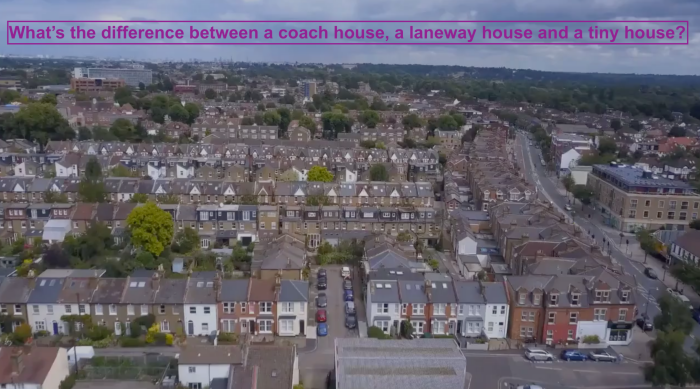A big deal for the tiny house
Last week, was a big deal for the humble tiny house. Kitchener city council approved changes to the city’s zoning allowing for up to three units on a property. This means, granny flats, tiny houses, basement apartments, coach houses, carriage houses, laneway houses and whatever else we can call accessory apartments and/or accessory units are now allowed in the city of Kitchener. It is an idea that though started at the provincial level of government is welcome in Kitchener (and Waterloo Region) as we long ago ran out of room to grow out. (For the past decade and a half we have mostly been growing upwards and filling in the blank spots).
But accessory units and homes are not traditional real estate so let’s look at some assumptions.
Financing
Lenders tend to be very conservative. As such it is very difficult to attain mortgages for tiny houses. If you need a loan for your new little home, you will likely be required to use a personal loan, a line of credit, an alternative financing option or perhaps an RV loan.
You may have to get creative for financing.
Zoning
Site location and zoning will need to be considered (and approved). Clearly, you will need a place to put your accessory house. Kitchener, like every other city has zoning bylaws which set out not only the amount of green space, separation between structures, fences and neighbours, but also you will have to abide by the fire code and everything in the building code…
Buying or building
The changes to the allowable types of dwelling is very broad. It includes renovations to allow for accessory apartments (granny flats), which is pretty straight forward. But it also allows for tiny houses, coach houses and laneway houses which are categories onto themselves. Let’s define those terms
What’s the difference between a coach house, a laneway house and a tiny house?
Coach house
A coach house is a second home on a lot. Often they were previously garages, carriage houses, guest houses or some other out-building on the property that is converted into a small dwelling.
Laneway house
A laneway house is essentially a type of coach home. The main difference is location. Laneway houses tend to be built at the back of properties and often face a laneway that runs behind the property.
Also, coach houses are more common in rural areas, whereas laneway houses are more common in urban areas.
Tiny house
A tiny house, as the name would indicate, is a small home. They are usually between 100 and 400 square feet. The tiny house movement promotes financial prudence, economic sustainability, and minimalism.
Often little houses are built on wheels, but they can also be built on rooftops of downtown buildings (common in Asia), or on plots of land out in the country. This is more about the style of living than the style of housing.
Granny flat
A so-called granny flat is a self-contained accessory unit located in or on the property of a single family home. It is called a granny flat because it is usually designed to house an aging parent.
Further reading
New rules would allow tiny houses…
Real estate video channel





